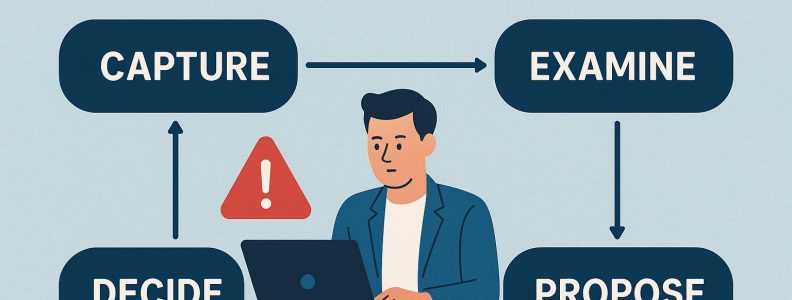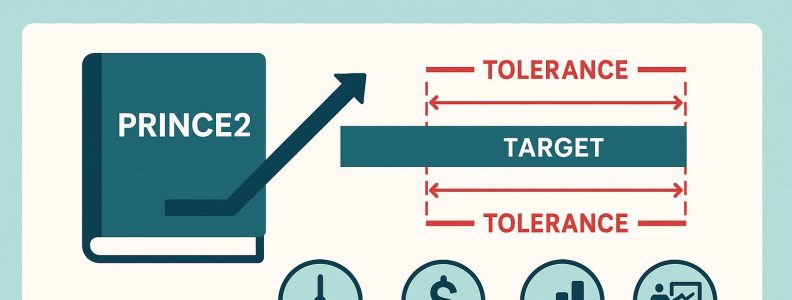Understanding PRINCE2
PRINCE2, an acronym for Projects IN Controlled Environments, is a structured project management methodology extensively adopted by organizations across various sectors, aiming to ensure that projects are efficiently managed and aligned with business priorities. The methodology provides a robust framework that is both scalable and adaptable, making it suitable for projects of any size or complexity.
Aligning Projects with Business Goals
One of the distinguishing features of PRINCE2 is its strong emphasis on aligning projects with the overarching objectives of an organization. This is vital for the realization of strategic business outcomes. By ensuring that each project is meticulously designed to contribute to the organization’s strategic goals, PRINCE2 provides clear pathways for managing resources effectively and delivering value.
The PRINCE2 Principles
Central to the PRINCE2 methodology are seven fundamental principles that guide projects in alignment with business goals. These principles form the foundation of PRINCE2, ensuring that every project component aligns with the intended business outcomes:
1. **Business Justification**: At its core, PRINCE2 mandates that a project must have a sound business case. This principle ensures that resources are allocated to initiatives that will deliver tangible benefits, thereby supporting organizational growth and fostering success.
2. **Learn from Experience**: A hallmark of PRINCE2 is its iterative learning approach. Throughout the project lifecycle, lessons learned are meticulously documented and analyzed. This feedback loop facilitates the continuous improvement of processes and strategies, ensuring that only effective and efficient practices are perpetuated.
3. **Defined Roles and Responsibilities**: PRINCE2 emphasizes the importance of clarity in role definitions within the project structure. By delineating roles and responsibilities, the methodology ensures accountability and ownership, enabling team members to understand clearly how their contributions facilitate the achievement of business objectives.
The Role of Themes in Alignment
PRINCE2’s approach to project governance is largely defined by its use of themes. These themes offer a structured context within which projects are managed and monitored, ensuring alignment with organizational strategies and objectives.
– **Business Case Theme**: This theme demands that the project’s justification be revisited at every major decision point. By doing so, it continually checks the project’s alignment with business goals, ensuring that the project remains viable and strategically aligned.
– **Organization Theme**: This theme focuses on defining the structure of the project management team. By ensuring clarity in roles and responsibilities, the theme guarantees that team members comprehend the alignment of the project with broader business strategies, thereby facilitating effective teamwork and collaboration.
Stages and Governance
A structured approach to project management is provided by PRINCE2 through its division of projects into distinct stages. Each stage is characterized by regular management checkpoints that allow for the evaluation of progress and alignment with business objectives. This staged approach enables project teams to make informed decisions, identifying necessary adjustments to realign the project’s direction when necessary.
Management Products
Within the PRINCE2 framework, there is a suite of management documents employed to ensure alignment and transparency. Central among these is the Project Initiation Document (PID), which outlines the project’s scope, objectives, and alignment with business strategies. This document acts as a reference point for all team members, ensuring a shared understanding of how their efforts contribute to the larger organizational goals.
Conclusion
PRINCE2 stands as a valuable tool for ensuring that projects are systematically aligned with an organization’s business goals. By requiring a sound business case, fostering accountability through well-defined roles, and incorporating rigorous evaluation mechanisms through its principles, themes, and stages, PRINCE2 projects consistently support the achievement of strategic organizational success. The framework provides a structured approach that not only enhances project outcomes but also fosters a disciplined environment within which projects operate.
For individuals seeking more comprehensive insight into PRINCE2, the official resources available from AXELOS, the governing body for PRINCE2, offer an array of information and guidance on best practices, methodology implementation, and certification. Utilizing these resources can deepen one’s understanding and competence in employing PRINCE2 effectively, ensuring that project management efforts are consistently geared toward achieving business goals.





